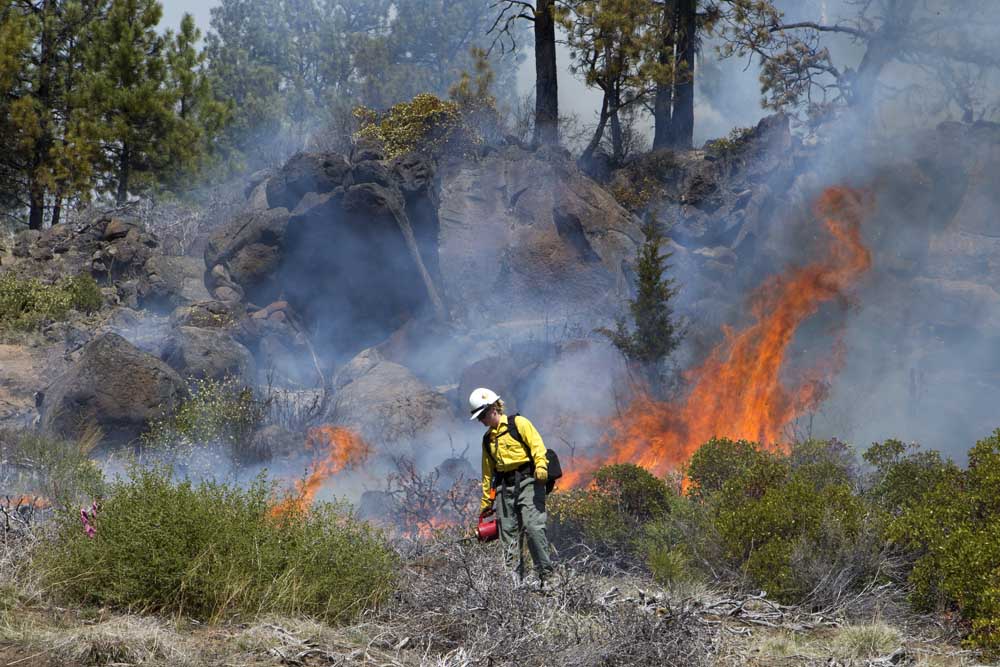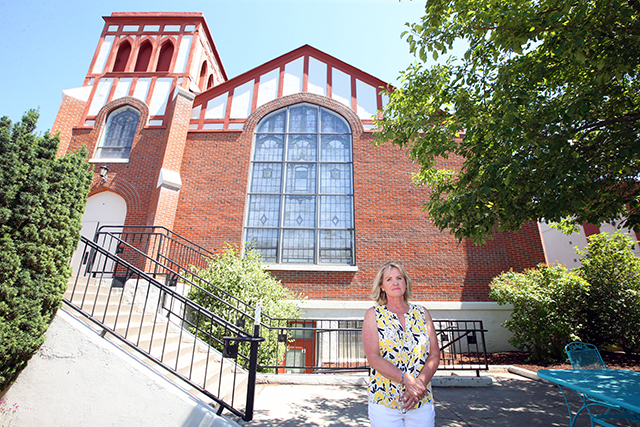State accepts Bend smoke plan
Published 2:00 pm Saturday, December 7, 2019

- Central Oregon Rappellers employee Gretchen Dengler uses a drip torch to ignite a controlled burn area near Century Drive on the edge of Bend in April 2018.
A plan on how authorities in Bend should manage smoke from prescribed fires has been approved by state regulators.
The plan, created jointly by the city of Bend and Deschutes County, guides how and when officials will inform the public before prescribed burns occur.
Trending
The plan also exempts Bend from a state-enforced restriction on how much smoke from prescribed burns can infiltrate the city limits on an hourly basis, according to a Dec. 7 letter signed by Peter Daugherty, Oregon’s State Forester, and Richard Whitman, Oregon’s director of the Department of Environmental Quality.
“Your community response plan will most certainly serve as an example for other Smoke Sensitive Receptor Area communities in the state to develop their own plans. This is a great example of local leadership initiative and leadership,” according to the letter reviewed by The Bulletin.
Prescribed burns are conducted on Bureau of Land Management and national forestland across Central Oregon. The primary function of the burns is to reduce overgrown vegetation, fallen branches and other woody products that could be fuel for an out-of-control wildfire.
When to conduct the preplanned burns is partially dictated by state air quality regulations established to protect the public from breathing air pollution at unhealthy levels.
Bend’s new Community Response Plan will help officials inform the public on the reasons for the prescribed burns, the time and locations for the burns, and ways to mitigate the impacts of smoke from a health standpoint, said Ed Keith, the Deschutes County Forester.
Bend was the first city in Oregon to submit a smoke plan, and also the first to have one approved, according to the Oregon Department of Forestry.
Trending
Some actions in the smoke plan are already in use, including the creation of a website (www.centraloregonfire.org) to inform the public on wildfires , smoke alerts and prescribed fires.
The website is a collaboration of several agencies, including the Deschutes National Forest, the Oregon Department of Environmental Quality and the Oregon Health Authority.
Residents can also sign up for text alerts that advise where and when the prescribed burns take place.
“We want the public to be informed so they know what to do,” said Keith. “If there is a fire near them the best thing is to close windows and doors to keep the smoke out of their house.”
Putting together the public awareness campaign helped Bend earn one of the air quality exemptions from the state. The exemption was made so that the city could continue to conduct necessary prescribed fires near the city.
Fire managers conduct vegetation thinning to limit the risk of wildfire entering neighborhoods on the city’s west side. The woodland areas just outside Bend have experienced devastating fires in the past — the Awbrey Hall fire burned 22 homes in 1990 and the Two Bulls Fire scorched 6,900 acres of forest in 2014.
The rule that sparked the exemption comes into play when pollution from smoke averages 70 micrograms per cubic meter of particulate matter, known as PM2.5. An intrusion can also occur when the PM2.5 average over a 24-hour period reaches 26 micrograms per cubic meter, measured from midnight to midnight.
While Bend is now exempt from the one-hour smoke intrusion level, the city will still need to comply with the 24-hour average threshold.
“If we had to go off the one hour standard then a lot of our burns close to Bend would not comply with those rules,” said Keith.
The Oregon Department of Forestry and the Department of Environmental Quality can revoke the exemption if there are repeated smoke intrusions (three or more in five years) that exceed the 24-hour average threshold.
Bend’s robust form of communication with the public paved the way for the exemption.
“Our experience is that the burns won’t impact town during the day but at night when it tends to sink in and you’d have short term impacts,” said Keith.
Fire management officials can estimate the amount of air pollution prior to a burn by taking into account the weather forecast plus the estimated tons of fuel to be burned, said Keith.
The particulate matter is so named because it is made up of tiny particles measuring 2.5 micrometers across. To put that into perspective, each particle is 30 times narrower than the width of a human hair.
The individual particles cannot be seen by the naked eye, but together they can be visible as a hazy brown smog from a distance. Particles less than 10 micrometers or less can penetrate deep into the lungs and get into the bloodstream, affecting human health.
Unhealthy levels of PM2.5 can increase increase the risk of lung cancer and heart attacks. The air pollution has also been linked to low birth weight and poor childhood growth, among other health problems.
On a 24-hour basis, Bend has recorded only a few instances of unhealthy air over the past year and a half. Since June of 2018, Bend’s daily air pollution average reached the “unhealthy” level (151-200 on the Air Quality Index) on just two days. Air quality hit the “unhealthy for sensitive groups” level (101-150 on the Air Quality Index) on 10 days during that time period.
Pollution levels can be reviewed on the air quality index website (www.aqicn.org). For those out in the field with no internet access, visibility is another way to determine air quality, according to Bend’s smoke plan.
More than 5 miles of visibility is an indication of good air quality. Less than 5 miles of visibility is an indication of air that is unhealthy for sensitive groups including young children, seniors and pregnant women. When visibility is less than one mile the air quality is considered unhealthy for everyone, and outdoor activities should be avoided.








